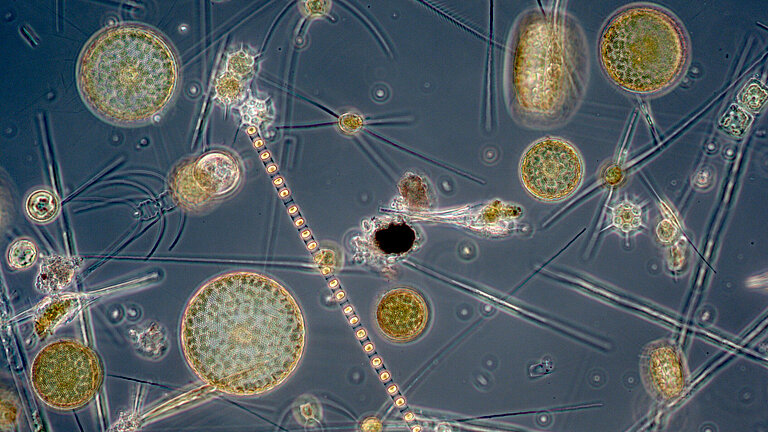Sometimes friend, sometimes foe
Research network DynaSym investigates relationships in plankton communities
To what extent is the relationship between different species fixed? Does a predator, for example, always act as a predator towards its prey? And will species that compete for the same nutrients always be competitors? For a long time, ecologist and evolutionary biologists assumed that such relationships between different species never change. But we now know that they can change – depending on the environmental conditions.
One of the central questions that the new research unit "Density dependent symbiosis in planktonic systems", or "DynaSym" for short, will investigate, is the role played by the population densities of the interacting species. The German Research Foundation (DFG) will fund the research unit for four years (starting in October 2024). The researchers work in eight sub-projects at a total of six German universities and research institutions, and are collaborating with partners from France, Israel and the United States of America.
"Using microorganisms as model organisms, we want to find out how density changes the type of interaction between species and how this affects the dynamics of populations and communities," explains Professor Dr. Lutz Becks from the Department of Biology at the University of Konstanz and spokesperson of DynaSym. For example, under what conditions does a competitive relationship change into a mutualistic relationship that is beneficial to both species? And do such changes have subsequent effects on population densities – in other words, are there feedback mechanisms?
Dr. Birte Matthiessen, marine biologist at GEOMAR Helmholtz Centre for Ocean Research Kiel, is leading the sub-project "Shifts in bacteria-algae symbiotic interactions - effects on plankton community dynamics and properties". It looks at the symbiosis between phytoplankton and associated bacteria both in the laboratory and in the ocean. Experiments will provide further information on the significance of the species composition and density of both partner communities for the symbiosis and the resulting dynamics of the biological communities. Of particular interest is the mechanism that explains the apparently stable interaction between the smallest representatives of the phytoplankton, the picoplankton, and their associated bacteria in particularly nutrient-poor areas of the ocean.
Through the combination of experimental and modelling approaches, the project aims to provide new general mechanistic insights into the dynamics of communities and thus a basis for revising and extending existing theories in ecology. "Thanks to our interdisciplinary approach, which brings together experts in experimental ecology and evolution with modellers, we are in an excellent position to comprehensively investigate the processes underlying the complex dynamics of biotic communities", says Professor Becks.
Background DynaSym
The research unit "Density dependent symbiosis in planktonic systems" ("DynaSym") investigates the influence of population densities on the interaction between different species. Spokesperson for DynaSym is the ecologist and evolutionary biologist Lutz Becks from the Department of Biology at the University of Konstanz. DynaSym involves the following research insitutions: University of Konstanz, University of Potsdam, University of Oldenburg, Ludwig-Maximilians-University Munich, Max Planck Institute for Evolutionary Biology and GEOMAR Helmholtz Centre for Ocean Research Kiel as well as the international project partners Tel Aviv University, Israel, University of Michigan, United States of America, University of Franche-Comté, France)
Background: DFG research units
A total of nine new research units and a new Centre for Advanced Studies in Humanities and Social Sciences will be funded, as the German Research Foundation announced today, 02. July 2024. The aim of DFG research units is to promote medium-term close collaboration of several outstanding researchers to work on a special research task with the aim of achieving results that clearly go beyond individual grants. The maximum funding duration of a research unit is two periods of four years each. In the first period, the new units will receive a total of around 41.3 million euros.

In DynaSym, GEOMAR researchers investigate symbioses between phytoplankton and associated bacteria. Photo: Julia Romberg, GEOMAR


